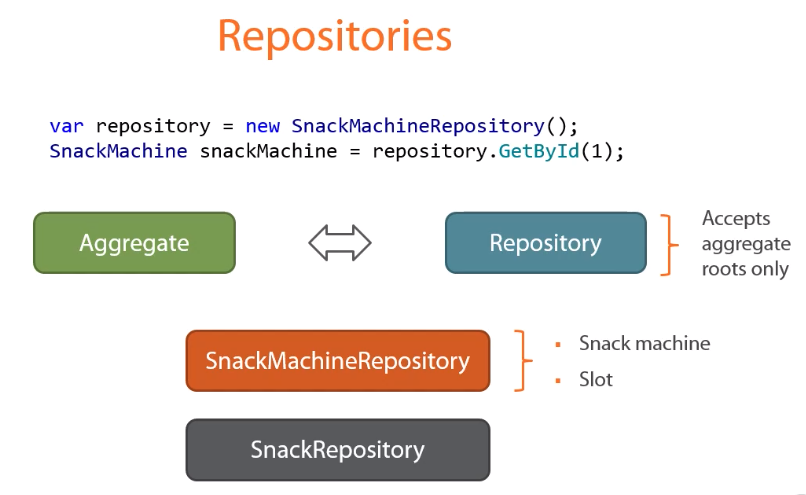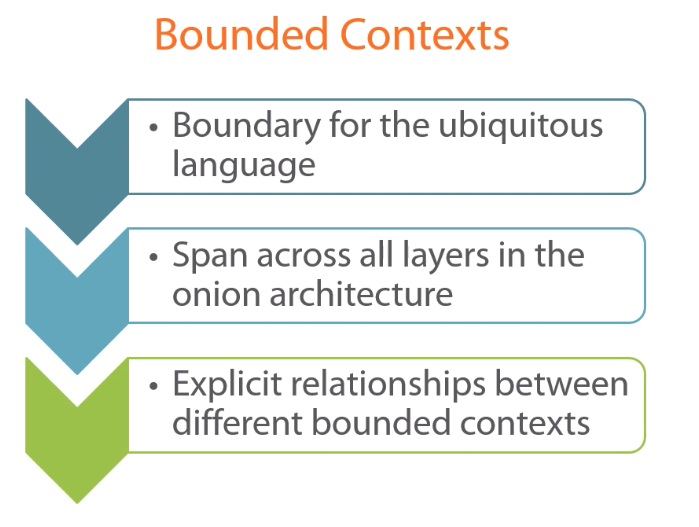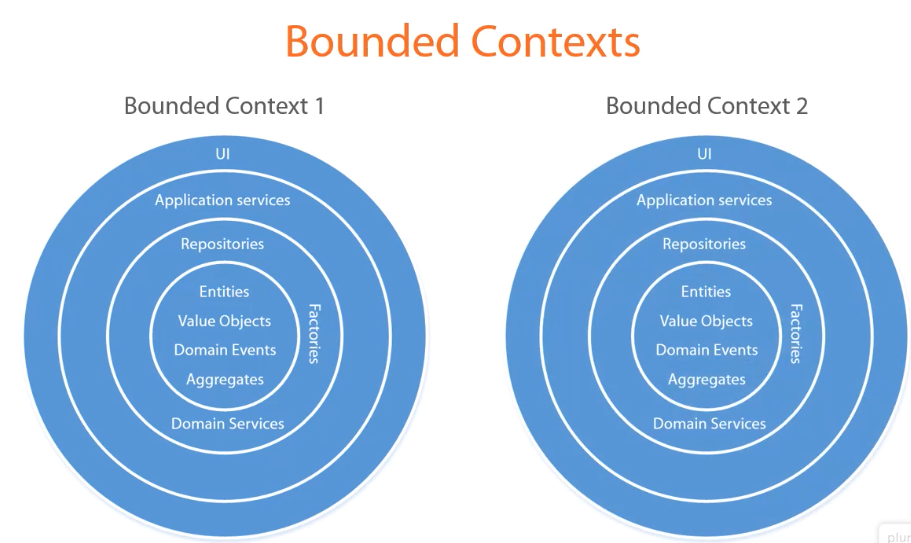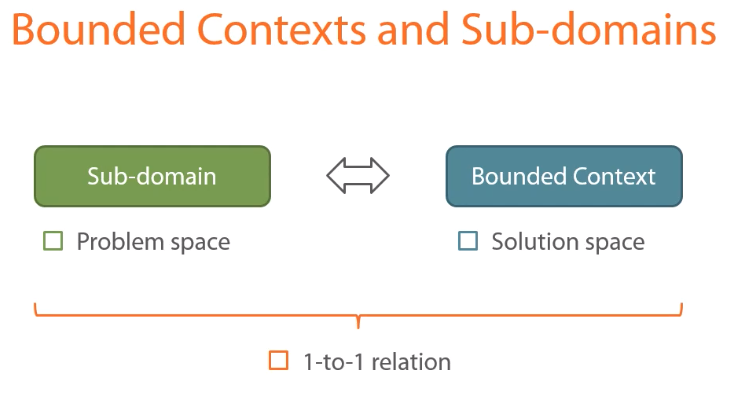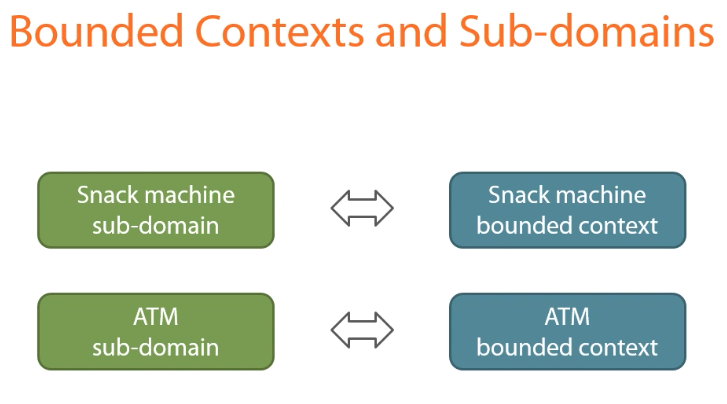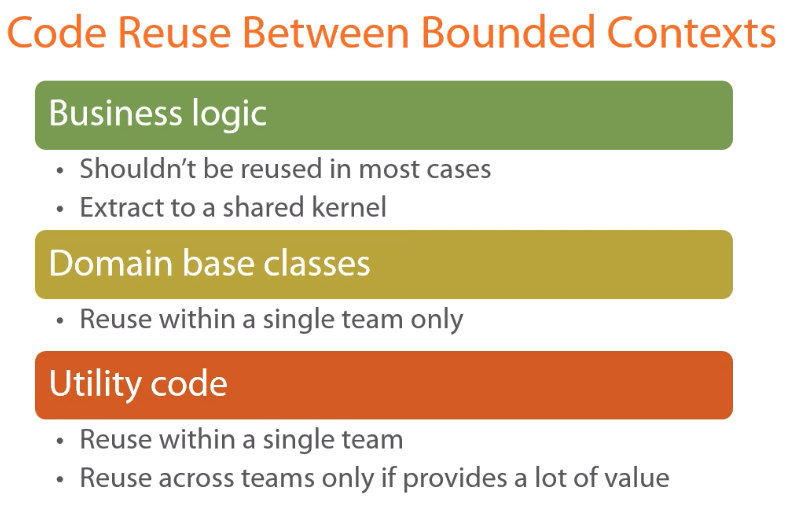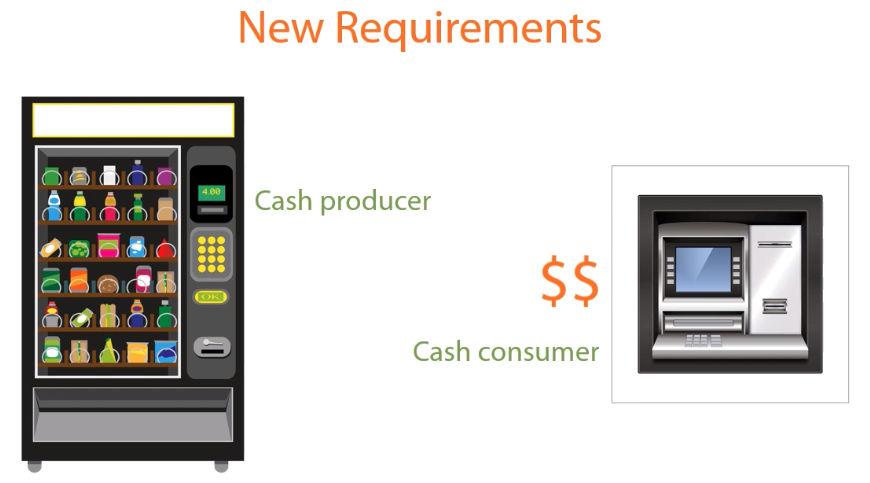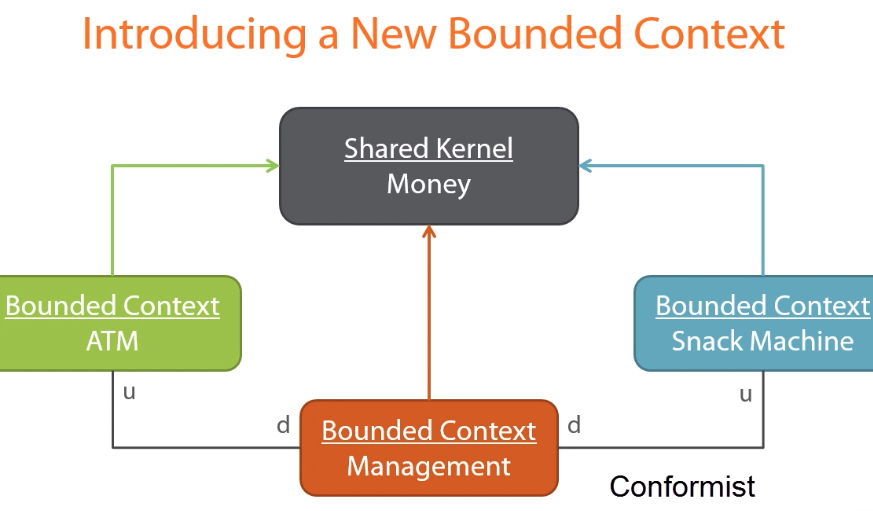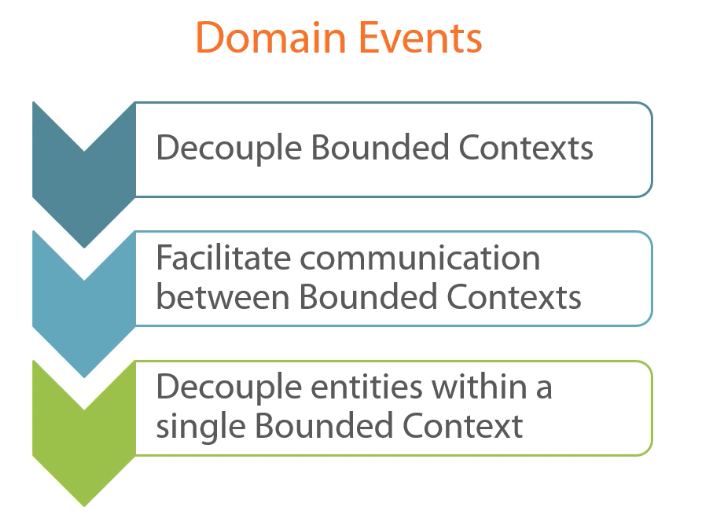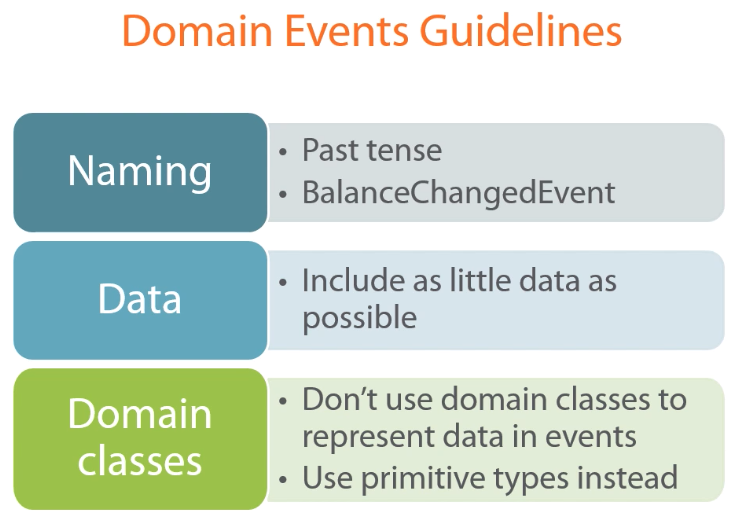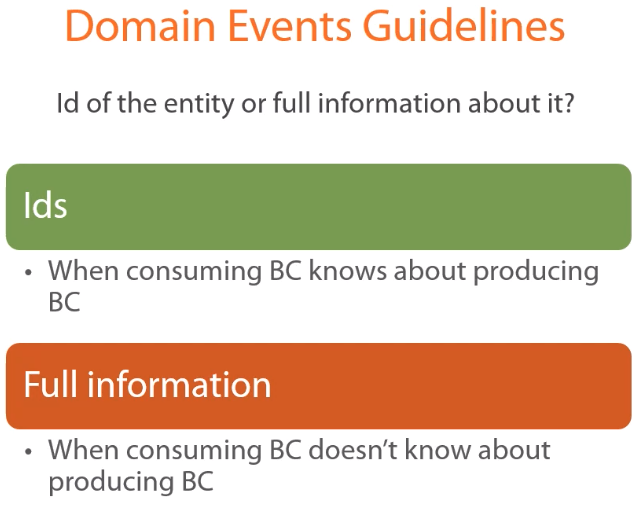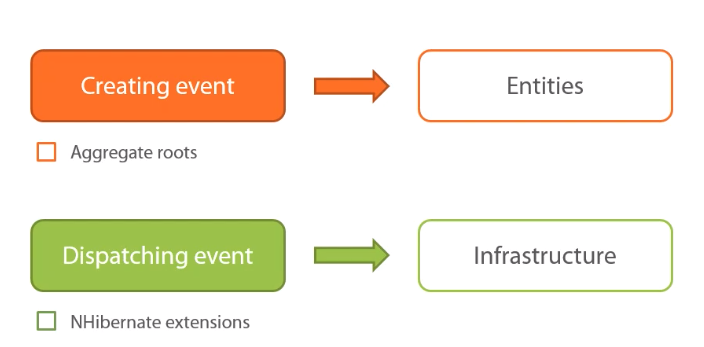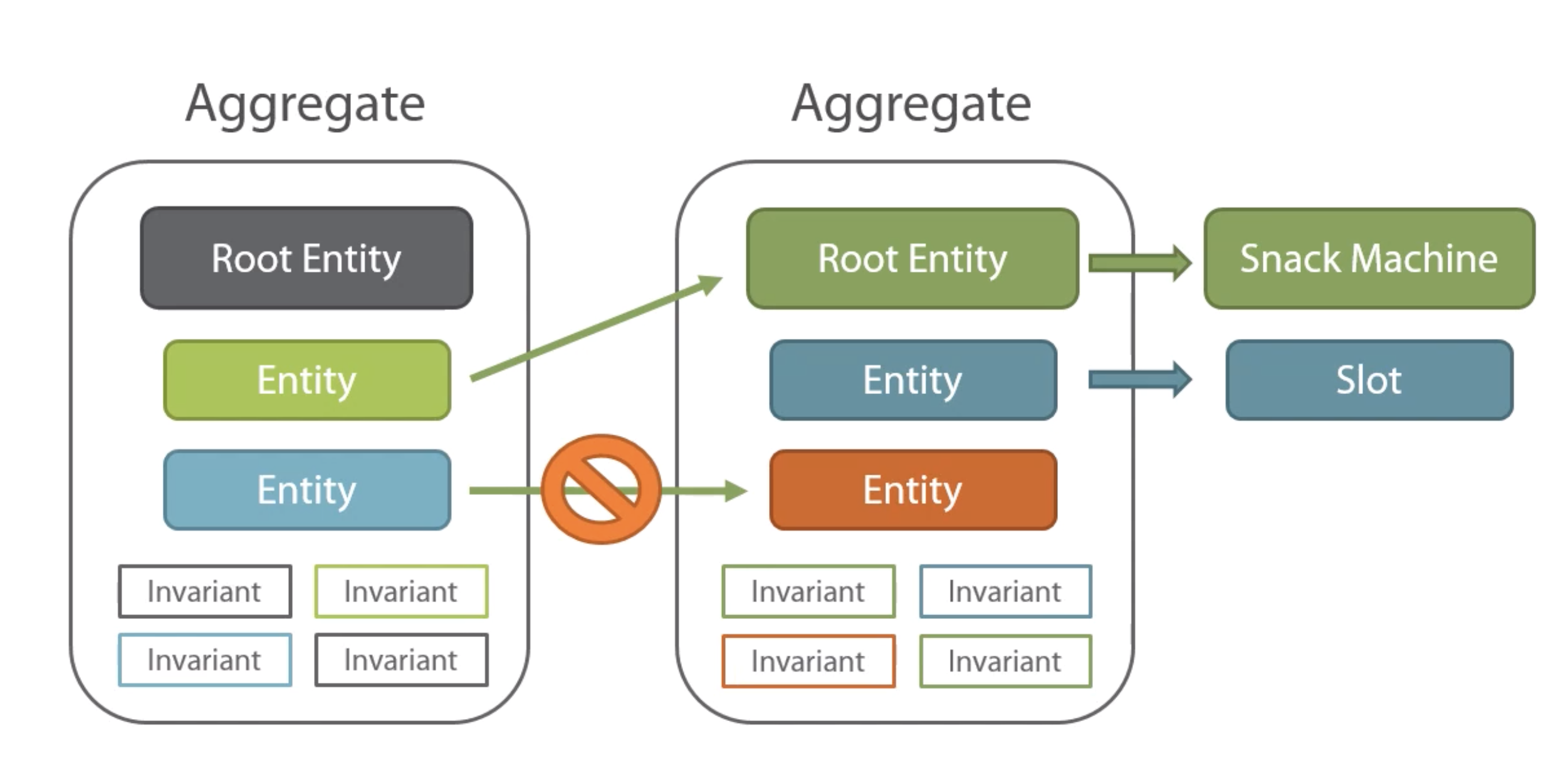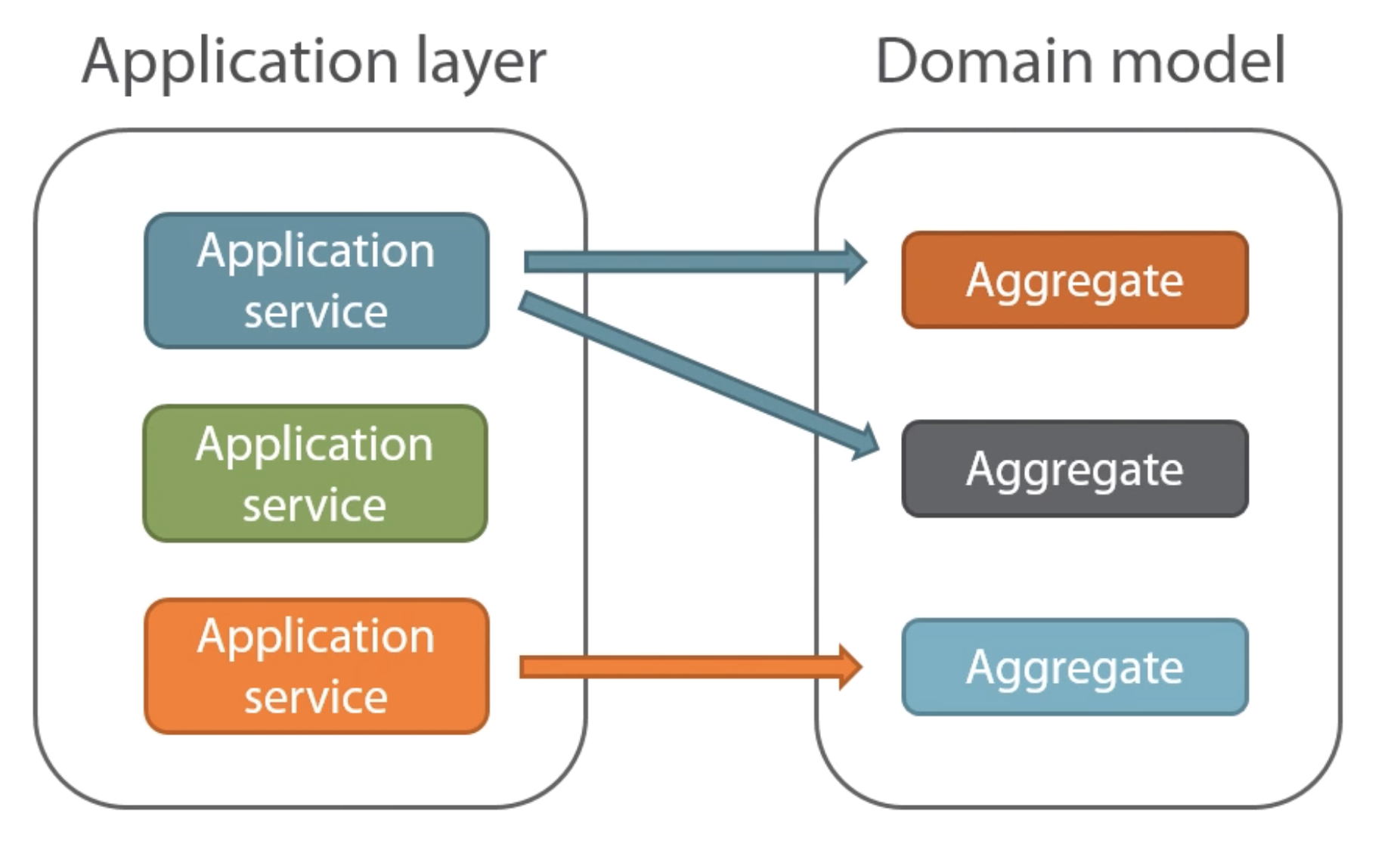This is project for me to review main DDD concepts and to practice .Net Core
-
Always start with the core domain
-
Don't include several bounded contexts upfront
-
Always look for hidden abstractions (Money class as an example)
-
We should not use .Net value objects for representing ddd value objects , this is mostly because structs do not suport inheritance and so you would need to implement equals and hash methods within all of your classes.
-
The most important parts to be covered with unit tests are the Domain Classes (the inner most layer of the onion architecture):
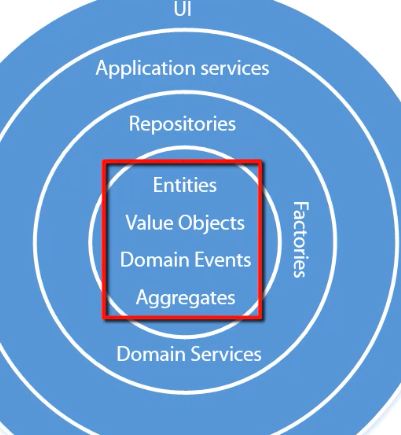
-
-
Unit tests should be written when using code first approach:
You should start writting your tests once you are done experimenting with your code over your domain classes and you are sure that you've achieved a good enough design on it.
Code-first approach for design experiments and them you should move to Test-first approach after you are confident on the class modelling.
-
-
Three important distinctions between Entities and Value objects and Entities:
- Reference vs Structural Equality
- Mutability vs Immutability
- Lifespan: Value Objects should belong to Entities
-
You should aim into depositing most of the logic that you are able to into value objects instead of entities, specially due to their immutability aspects.
-
A good rule of thumb while managing repositories is to have one repository per aggregate.
-
Another important point worth noting about repositories, is that their public methods should work with aggregate roots only, and all of their working with other internal entities should be done behind the scenes, either manually in the repository or using ORM mapping capabilities.
-
It is a good idea to comission all of the communications with the database to repositories, even if such communications bypass the ORM (using SQL directly or calling stored procedures manually).
-
Bounded Contexts:
It is a fundamental pattern for DDD, it is for when your project grows and you have more people working on the project and becomes harder to have a single unified model for the hole project.
-
Bounded Contexts vs Sub-Domains:
Those are also very fundamental concepts which are constantly mistaken by programmers while discussing DDD.
They should have a relationship proportion of 1 to 1 being that the sub-domain relates to the problem that you are trying to solve, as the bounded-context is most likely the representation of the sub-domain in the solution being implemented.
-
Code Reuse Between Bounded Contexts
You should not use code of entities from one Bounded Context into the other, also, if you feel that there is a use case for valueObjects you can extract them into a sharedKernel and do so.
-
Now that we have new requirements for a management subsystem we should create a new bounded context:
The new Bounded Context (Management) has a downstream relationship with the previous Bounded Contexts (SnackMachine and ATM), in such a way that it will use their models to transfer money between them:
-
Domain Events, in order for us to not need to create coupling between our bounded contexts, we will create a domain event so we can establish that comunication without creating this coupling.
-
Dispatching events the right way
The Domain model should only be responsible for creating the events and not for dispatching and managing its lifeCycle, this should be delegatad to the insfrastructure layer.
For our specific case, we are relying on NHibernate extensions, which allow us to extend its behaviour with our own code, this way, we listen to events that NHibernat releases when it finishes publishing the domain classes, this is expressed by the code on:
Where it is implemented the behaviour that reacts to the events, and also this code section:
ExposeConfiguration(x => { x.EventListeners.PostCommitUpdateEventListeners = new NHibernate.Event.IPostUpdateEventListener[] { new EventListener() }; x.EventListeners.PostCommitDeleteEventListeners = new NHibernate.Event.IPostDeleteEventListener[] { new EventListener() }; x.EventListeners.PostCommitInsertEventListeners = new NHibernate.Event.IPostInsertEventListener[] { new EventListener() }; x.EventListeners.PostCollectionUpdateEventListeners = new NHibernate.Event.IPostCollectionUpdateEventListener[] { new EventListener() }; });
Over the SessionFactory.cs file
As you can see, the collection of domain events is defined into the AggregateRoot Base Class class, and that is by design, as the Aggregate Root is responsible for maintaining aggregate invariants and consistency boundaries, they are also responsible for all of the domain events that occur within the aggregate.
-
-
Creting the database:
-
Docker command:
docker run --name sql-server-ddd-review-dotnet-core -e 'ACCEPT_EULA=Y' -e 'SA_PASSWORD=reviewddd@123' -p 1433:1433 -d mcr.microsoft.com/mssql/server:2017-CU10-ubuntu
-
Table creation:
CREATE DATABASE DddInPractice;
-
Table creation:
use DddInPractice; CREATE TABLE dbo.SnackMachine ( SnackMachineID bigint PRIMARY KEY, OneCentCount INT NOT NULL DEFAULT 0, TenCentCount INT NOT NULL DEFAULT 0, QuarterCount INT NOT NULL DEFAULT 0, OneDollarCount INT NOT NULL DEFAULT 0, FiveDollarCount INT NOT NULL DEFAULT 0, TwentyDollarCount INT NOT NULL DEFAULT 0); CREATE TABLE dbo.Snack ( SnackID BIGINT NOT NULL PRIMARY KEY, Name VARCHAR(200) NOT NULL ); CREATE TABLE dbo.Slot ( SlotID BIGINT NOT NULL PRIMARY KEY, Quantity BIGINT DEFAULT 0 NOT NULL, Price DECIMAL DEFAULT 0 NOT NULL, SnackID BIGINT NOT NULL CONSTRAINT slot_snack_fk REFERENCES dbo.Snack, SnackMachineID BIGINT NOT NULL CONSTRAINT slot_snackmachine_fk REFERENCES dbo.SnackMachine, Position INT NOT NULL );
-
Adding the first register:
INSERT INTO dbo.SnackMachine VALUES(1,1,1,1,1,1,1);
-
Creating the Hi/Lo table
CREATE TABLE dbo.Ids(EntityName VARCHAR(40) NOT NULL, NextHigh INT NOT NULL DEFAULT 1); ;
-
Preparing seeding data:
INSERT INTO dbo.Snack VALUES(1,'Chocolate'); INSERT INTO dbo.Snack VALUES(2,'Soda'); INSERT INTO dbo.Snack VALUES(3,'Gum');
INSERT INTO dbo.Slot VALUES(1, 10, 3.00, 1, 1, 1); INSERT INTO dbo.Slot VALUES(2, 10, 2.00, 2, 1, 2); INSERT INTO dbo.Slot VALUES(3, 10, 1.00, 3, 1, 3);
-
Creating the application inside the Hi/Lo table
INSERT INTO dbo.Ids VALUES('SnackMachine', 1); INSERT INTO dbo.Ids VALUES('Slot', 1); INSERT INTO dbo.Ids VALUES('Snack', 1);
-
Your connectionString will be:
@"Server=localhost;Database=DddInPractice;User Id=sa;Password=reviewddd@123;"when running locally, on a container exchange localhost for the db container name
-
IMPORTANT:
ADD THE USING STATEMENT FOR
using System.Data.SqlClient;
Over the SessionFactory.cs file, and also as Nuget reference to yout project:
<PackageReference Include="System.Data.SqlClient" Version="4.8.2" />
OTHERWISE IT WON'T WORK FOR NHIBERNATE !!!!
-
-
For this system we have two aggregatres:
- Snacks
- SnackMachine
They should work as retainers of a group of related entities
Entities outside of the aggregate should only have access to the root aggregate
This goes to other layers of the application:
-
When you are defining the boundaries between aggregates you should ask yourself: "Does this entity makes sense without that other entity? If the answer is yes, they should be the root of two separate aggregates."
-
Entities inside of an aggregrate should be cohesive and dependent of each other
-
Entities of separated aggregates should be losely coupled in the relationships among itselfs.
-
-
Aggregates should be persisted with a eventually consistent state, beware of creating too much big aggregates:
-
Most aggregates consist of 1 or 2 entities
-
3 entities per aggregate is usually a max
- this rule do not apply to a value object
-
1 to many relationships should be viewed as 1 to some relationships, and if you have more than 30 members on the many side, it is a sign that you should separate those on a separated aggregate, this is mainly related to the fact that it will be harder to work on performance issues with your domain modeled like that.
-
- https://stackoverflow.com/questions/371328/why-is-it-important-to-override-gethashcode-when-equals-method-is-overridden
- https://stackoverflow.com/questions/638761/gethashcode-override-of-object-containing-generic-array/639098#639098
